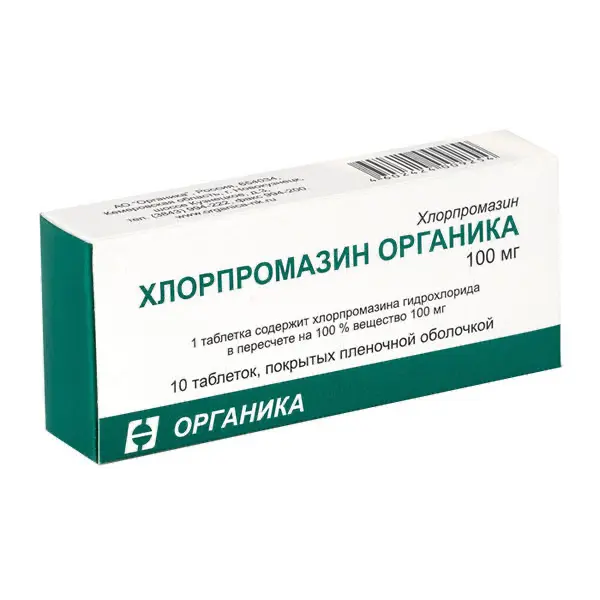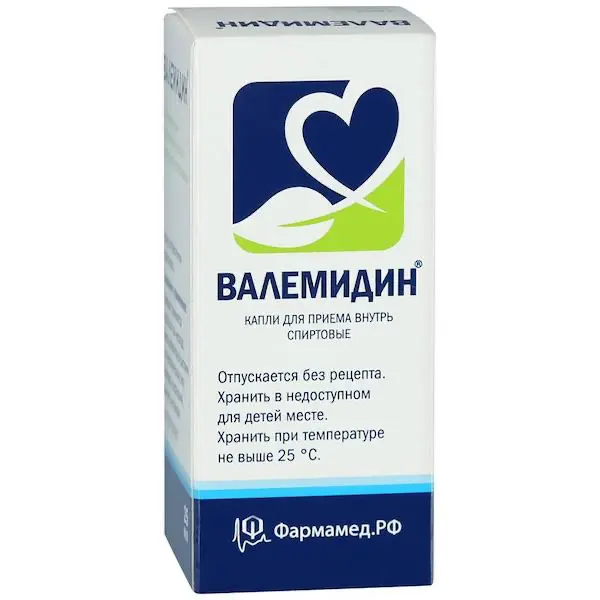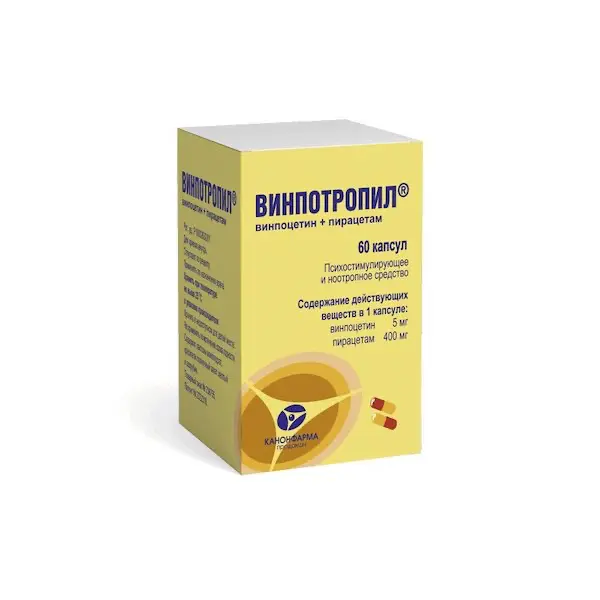Description
Chlorpromazine Organica Pharmacodynamics
Chlorpromazine is a dimethylamine derivative of phenothiazine. Although the exact mechanism of chlorpromazine’s therapeutic effects is unknown, its main effect is neuroleptic, resulting in a reduction of psychotic symptoms.
Chlorpromazine has sedative and antiemetic effects. It blocks alpha-adrenoreceptors and has a weak anticholinergic effect. Chlorpromazine is a dopamine antagonist and stimulates prolactin release. Chlorpromazine blocks serotonin receptors and has weak antihistamine properties. It inhibits the thermoregulation center, which impairs the body’s resistance to equalizing body temperature with ambient temperature.
Indications
– Acute and chronic psychotic disorders, especially paranoid, schizophrenia, manic disorders, organic psychosis, etc.
– Psychomotor agitation (agitation) in anxiety disorders.
– Behavioral disorders accompanied by aggression and potentially dangerous for the patient and others.
– Schizophrenia in children, autism.
– Induction of hypothermia.
– Persistent hiccups.
– Indomitable nausea and vomiting in the terminal stages of severe diseases.
Contraindications
– Individual hypersensitivity to the components of the drug;
– lactose intolerance, lactase deficiency, glucose-galactose malabsorption;
– poisoning with substances that depress the function of the central nervous system (CNS);
– comatose states of any etiology;
– Inhibition of medullary hematopoiesis;
– Pregnancy, breast-feeding;
– Children under 12 years of age (for this dosage form).
Caution
Parkinson’s disease, active alcoholism (risk of hepatotoxic effects), breast cancer, epilepsy, chronic diseases accompanied by respiratory disorders (especially in children), Reye syndrome, cachexia, old age, vomiting (antiemetic effects of phenothiazines may mask vomiting associated with overdose of other drugs).
Dosage and administration
- Tablets are administered orally (after meals), without chewing, with plenty of water.
- It is advisable to choose the optimal dose individually. If clinical condition of a patient allows, treatment should be started with the lowest possible dose and gradually increased.
- Schizophrenia, other psychoses, agitation, autism, induction of hypothermia Adults:
- The initial daily dose for oral administration is 25-100 mg daily 1-4 times daily, then, with tolerability, the dose is gradually increased by 25-50 mg every 3-4 days, until the desired therapeutic effect is achieved. In cases of ineffectiveness of medium doses, the dose is increased to 700-1000 mg daily, and in some extremely resistant cases without somatic contraindications, the dose may be increased to 1200-1500 mg daily. When treating with large doses, the daily dose is divided into 4 parts (the last one before bedtime). Duration of treatment with high doses should not exceed 1-1.5 months, if there is no effect it is advisable to switch to treatment with other drugs. The highest doses of the drug for adults inside: single 300 mg, daily 1500 mg.
- Weakened and elderly patients start therapy with 1/3 to 1/2 of usual doses for adults with more gradual increase in dosage; the recommended daily dose is up to 300 mg per day. Children:
- In children from 12 years of age, the drug is administered at 550 mcg/kg (0.55 mg/kg) or 15 mg per 1 m2 body surface area if necessary every 6-8 hours. If body weight is less than 46 kg, the drug should not be prescribed in dose more than 75 mg per day.
- Persistent hiccups Adults:
- 25 mg every 4 to 6 hours.
- Children:
- The dosing regimen for persistent hiccups in children is not defined.
- Persistent nausea and vomiting in the terminal stages of severe disease Adults:
- 25 mg every 4 to 6 hours.
- Children:
- In children from 12 years of age, the drug is administered at 550 mcg/kg (0.55 mg/kg) or 15 mg per 1 m2 body surface area if necessary every 4-6 hours. If body weight is less than 46 kg, the drug should not be prescribed in dose more than 75 mg per day.





